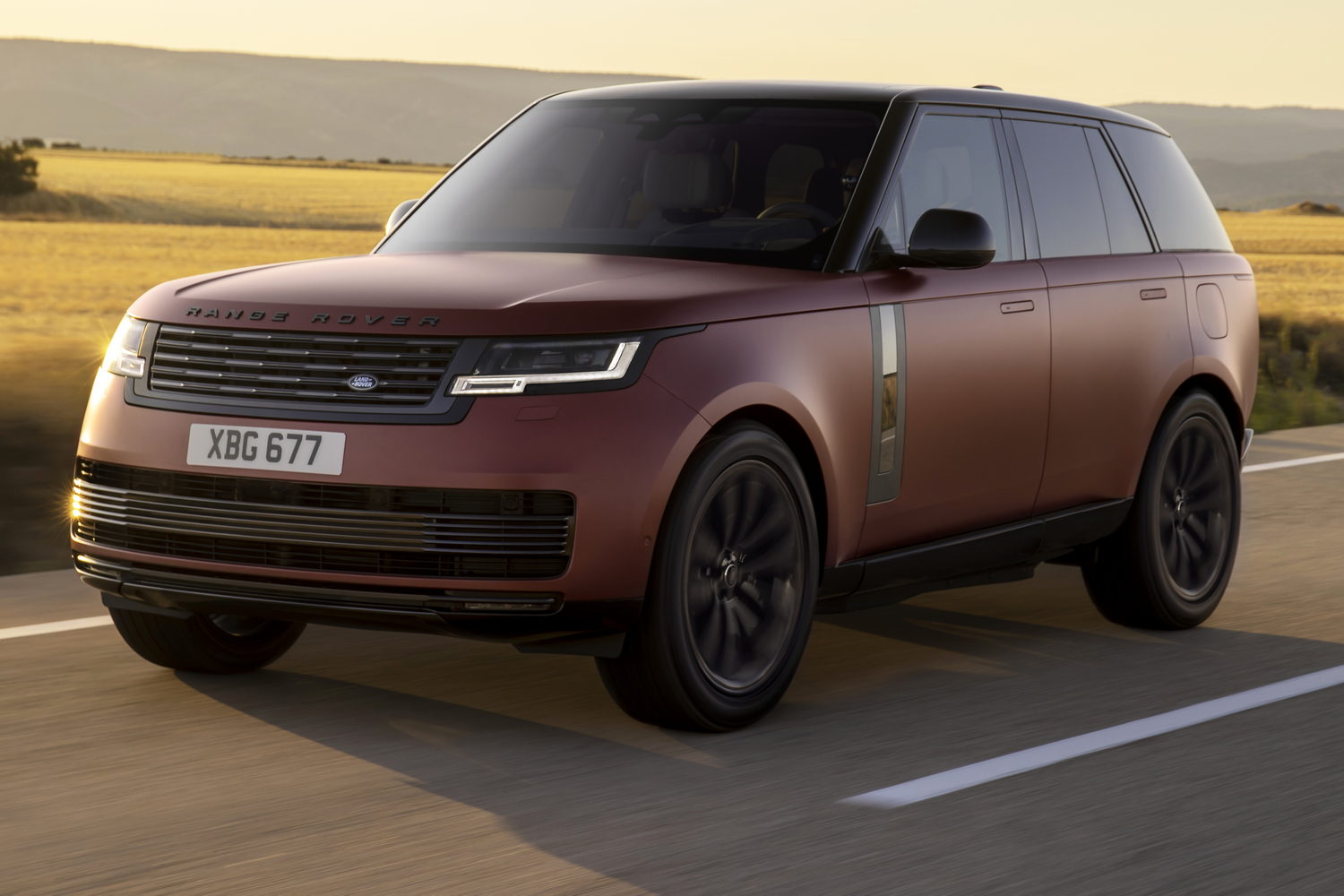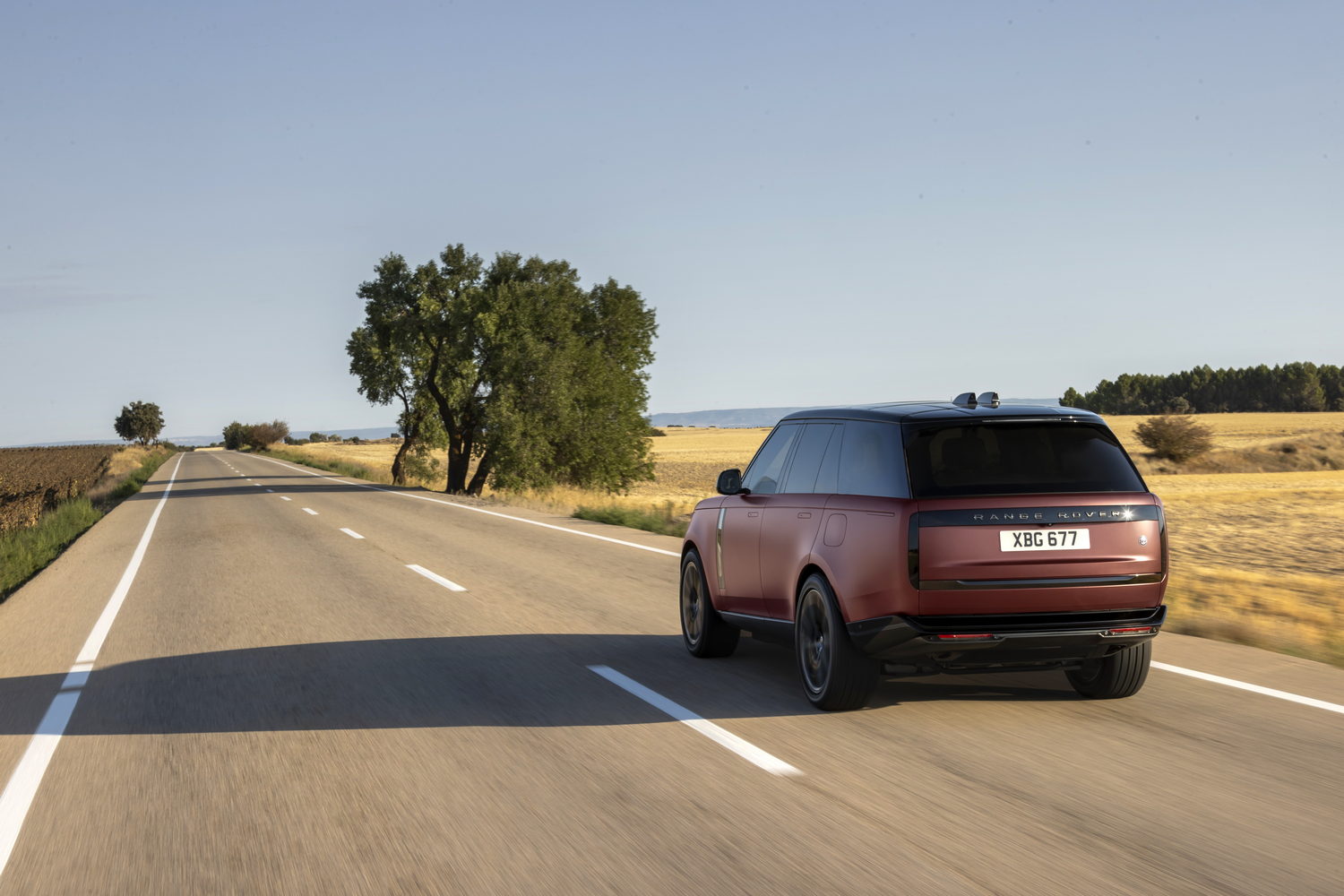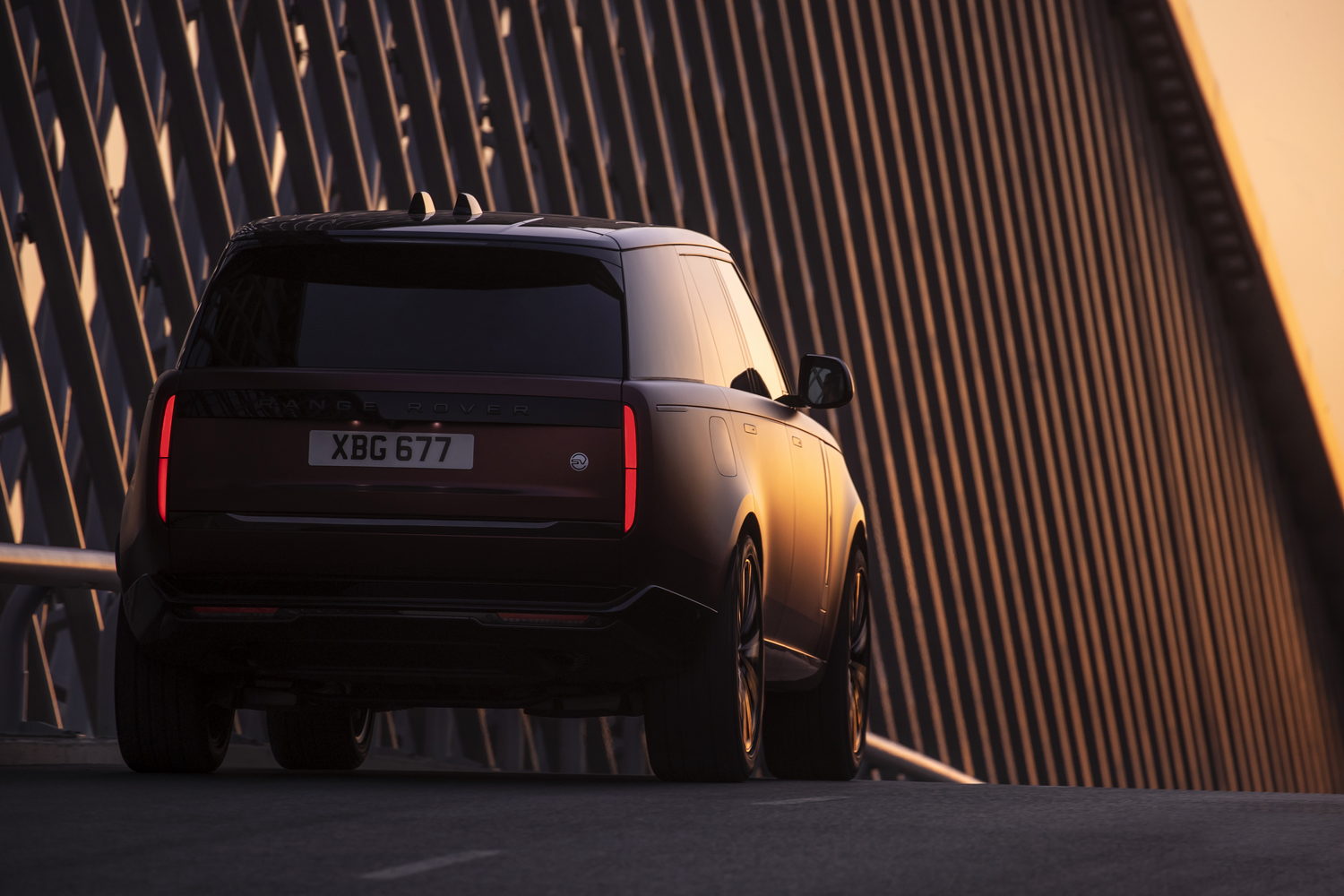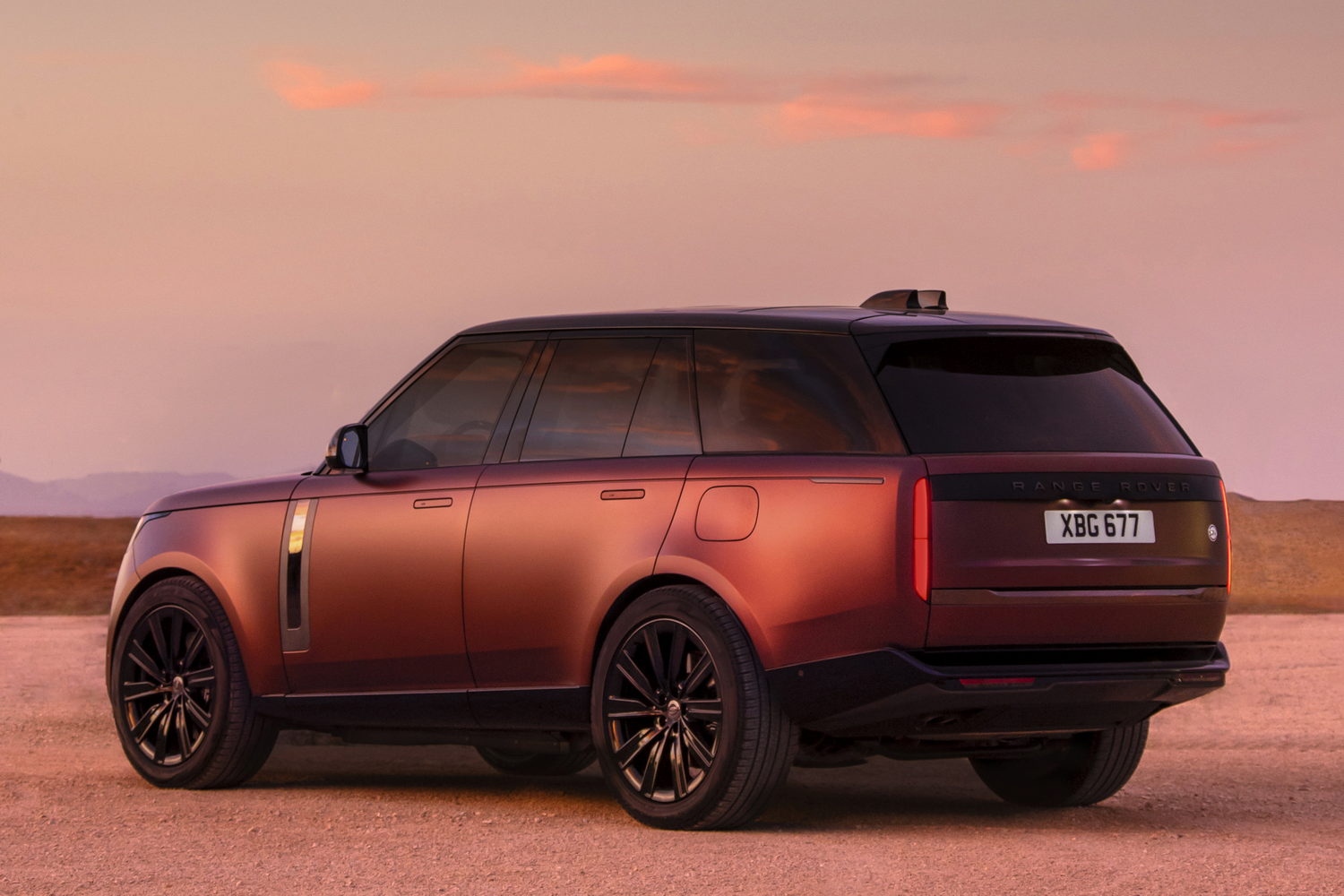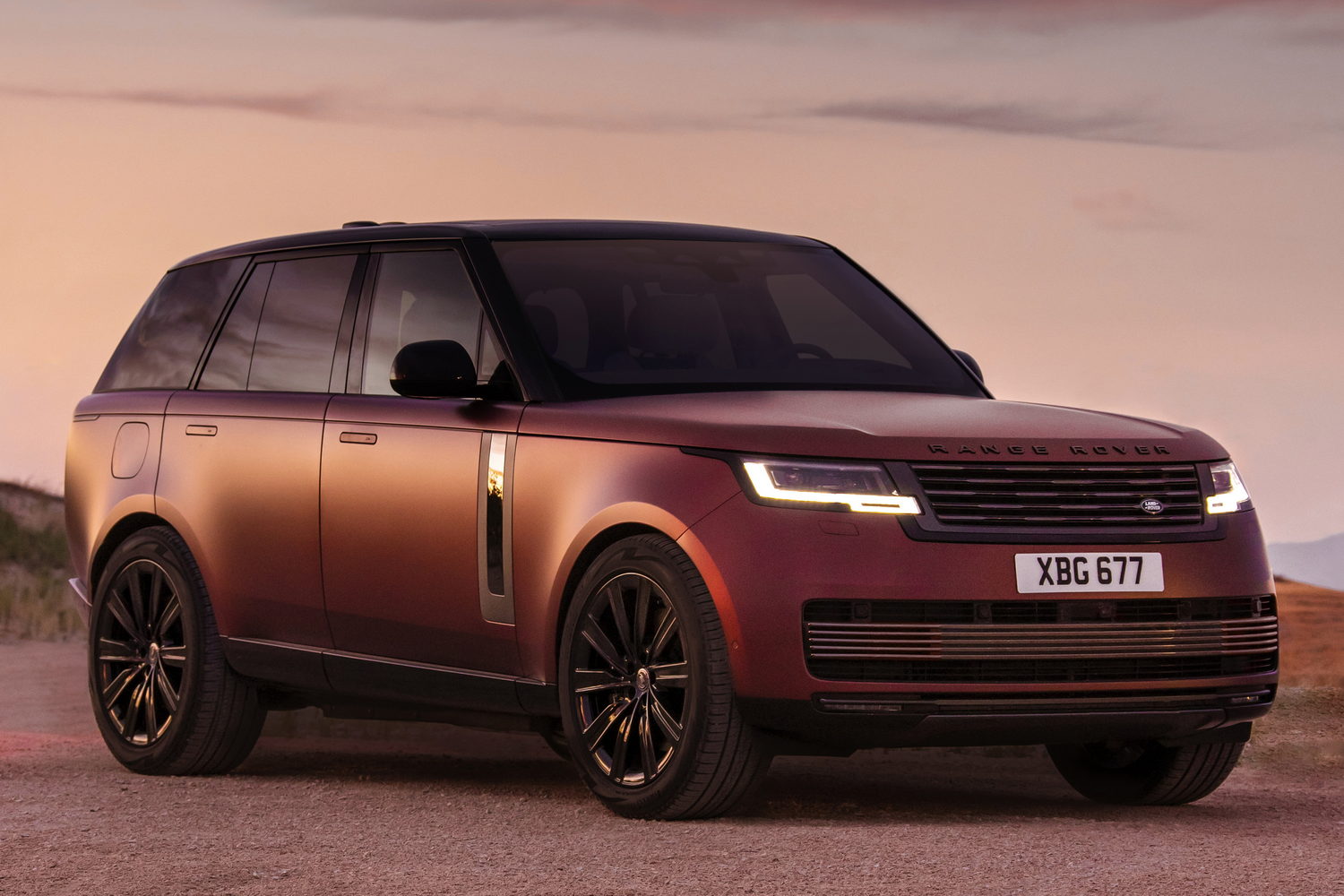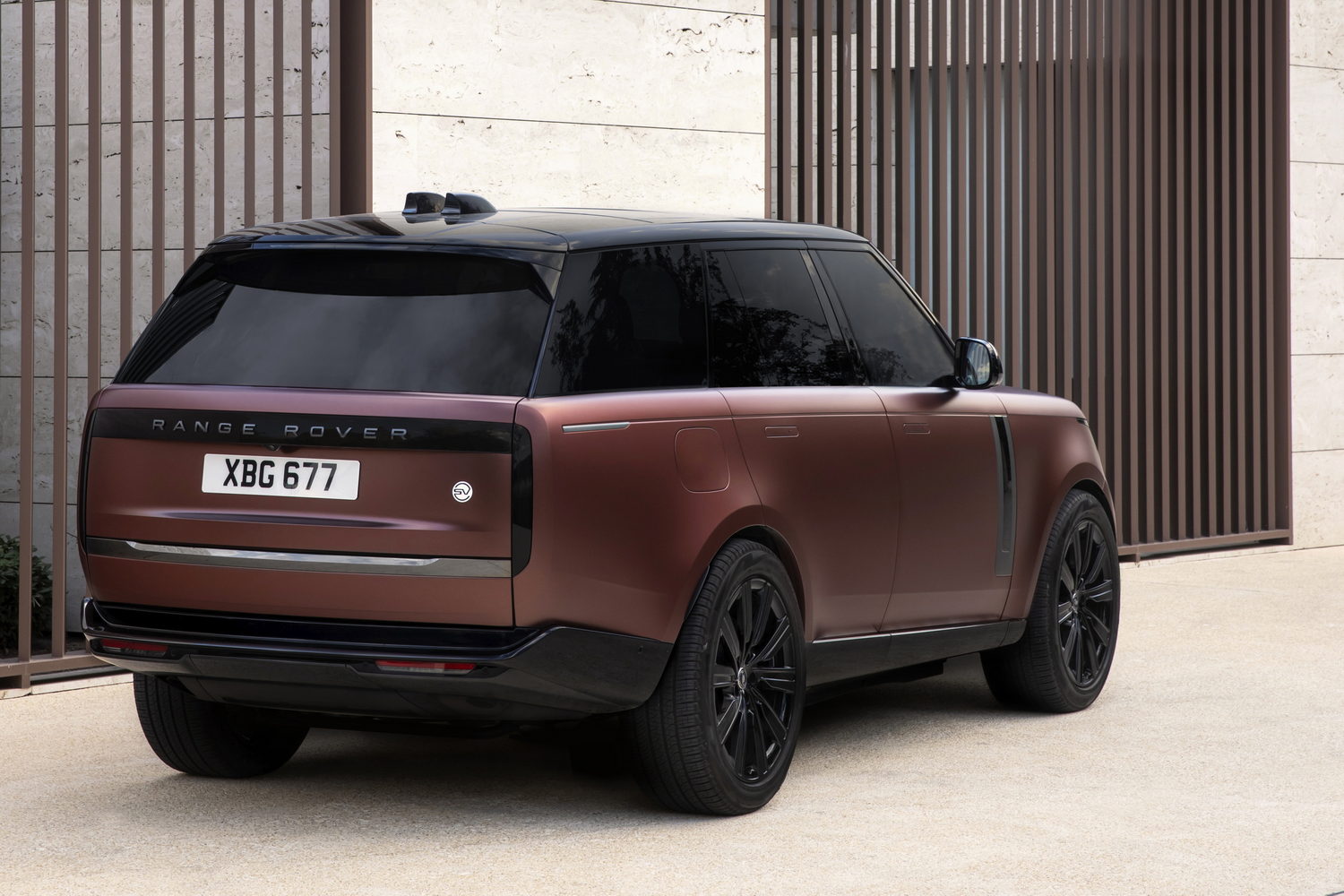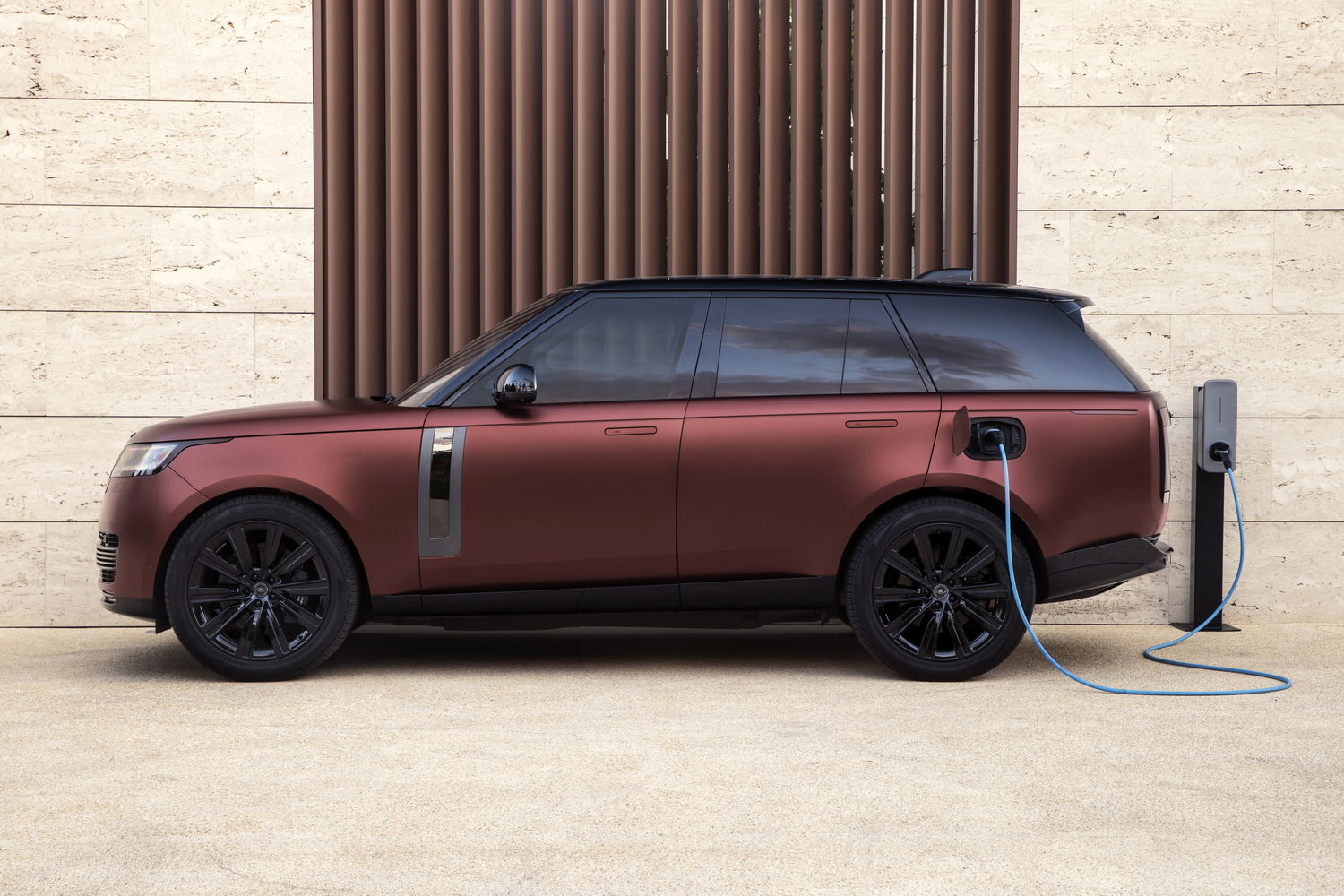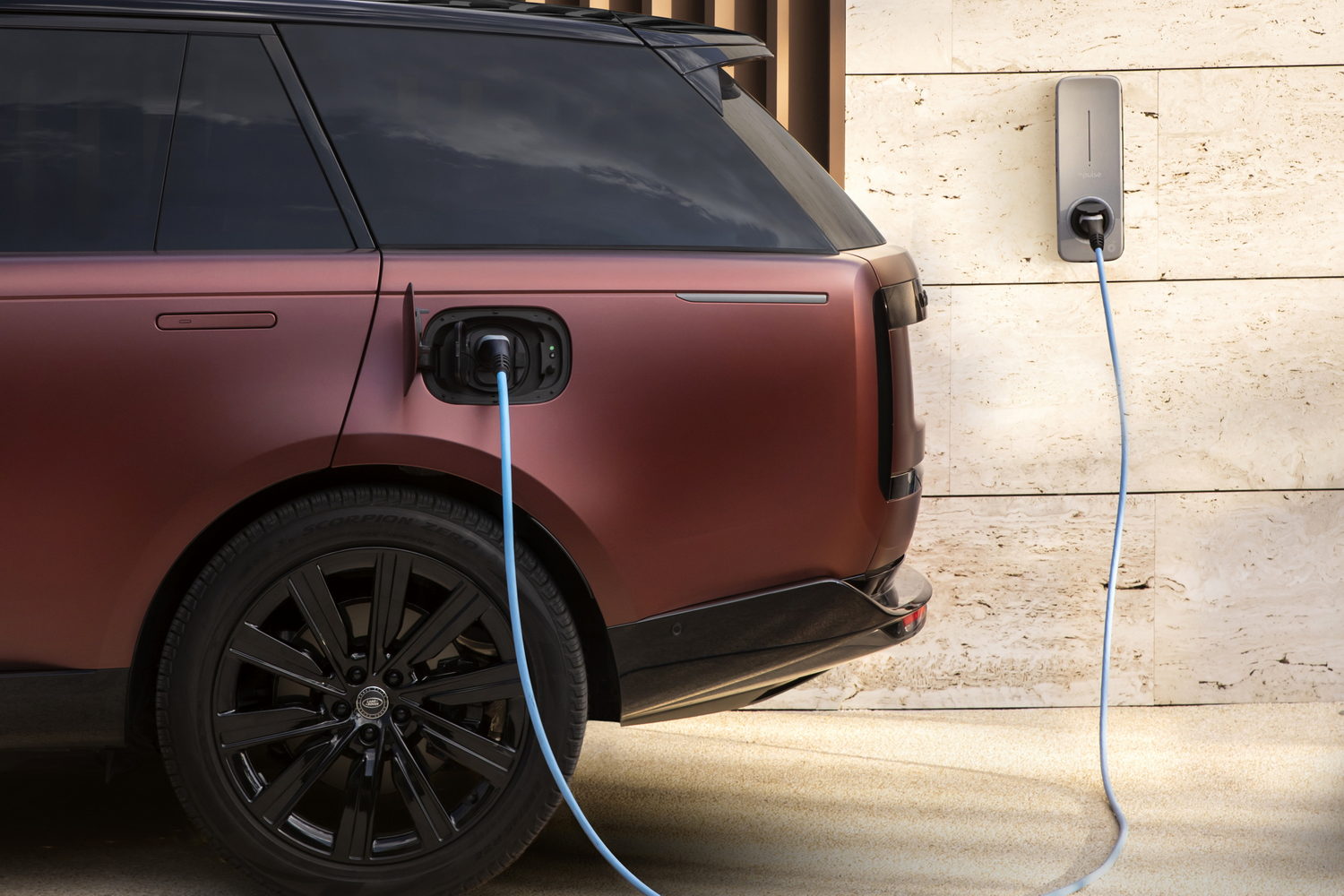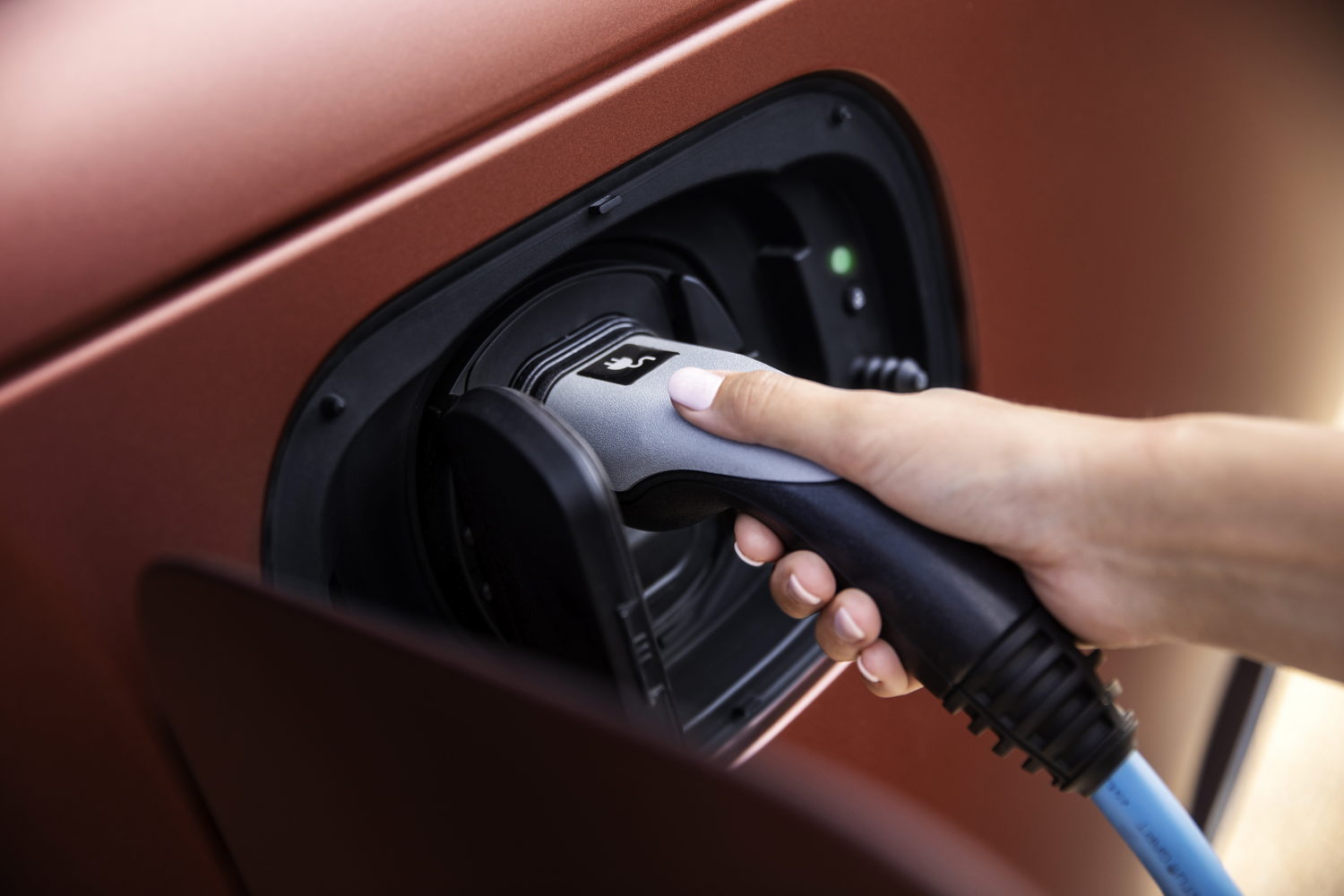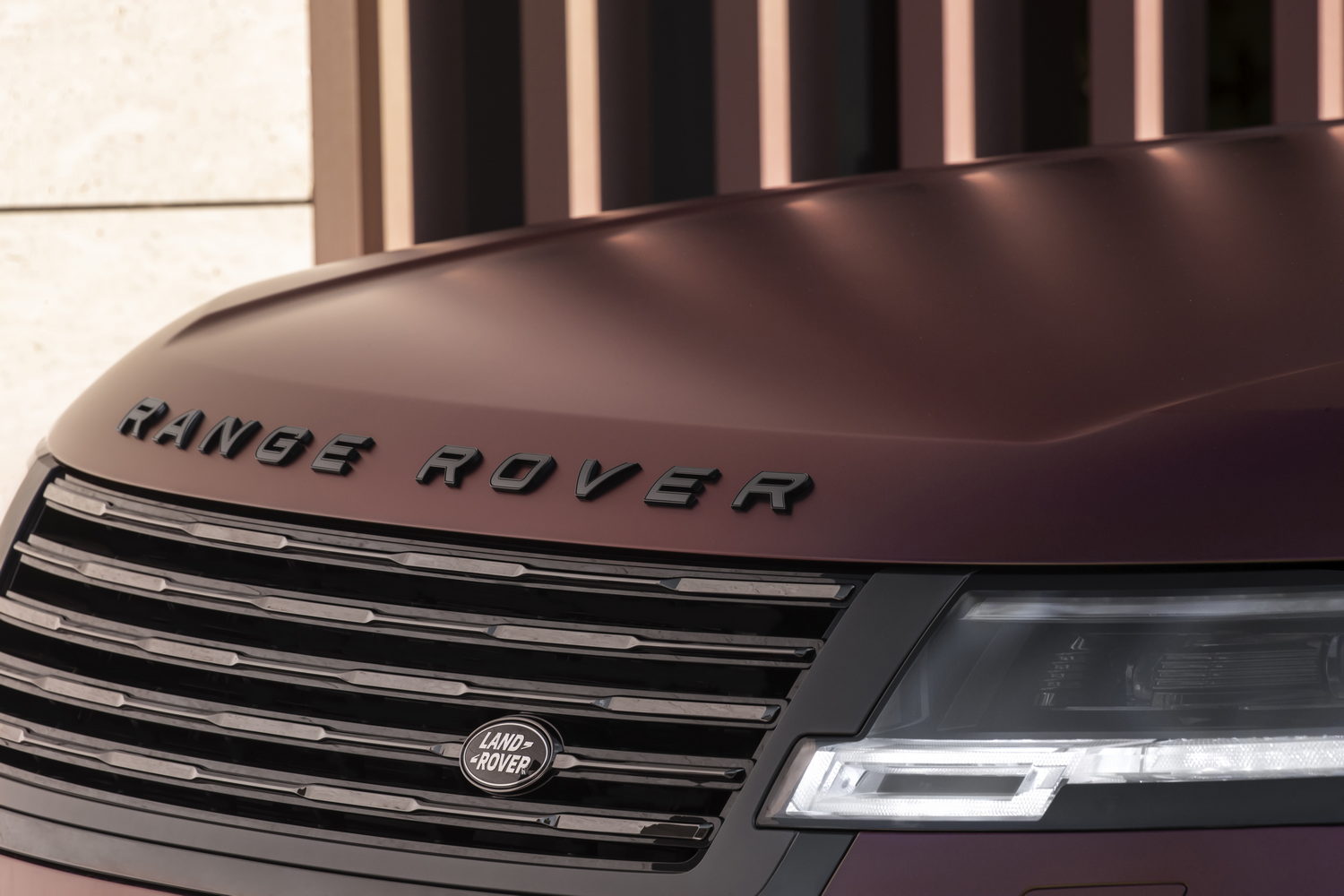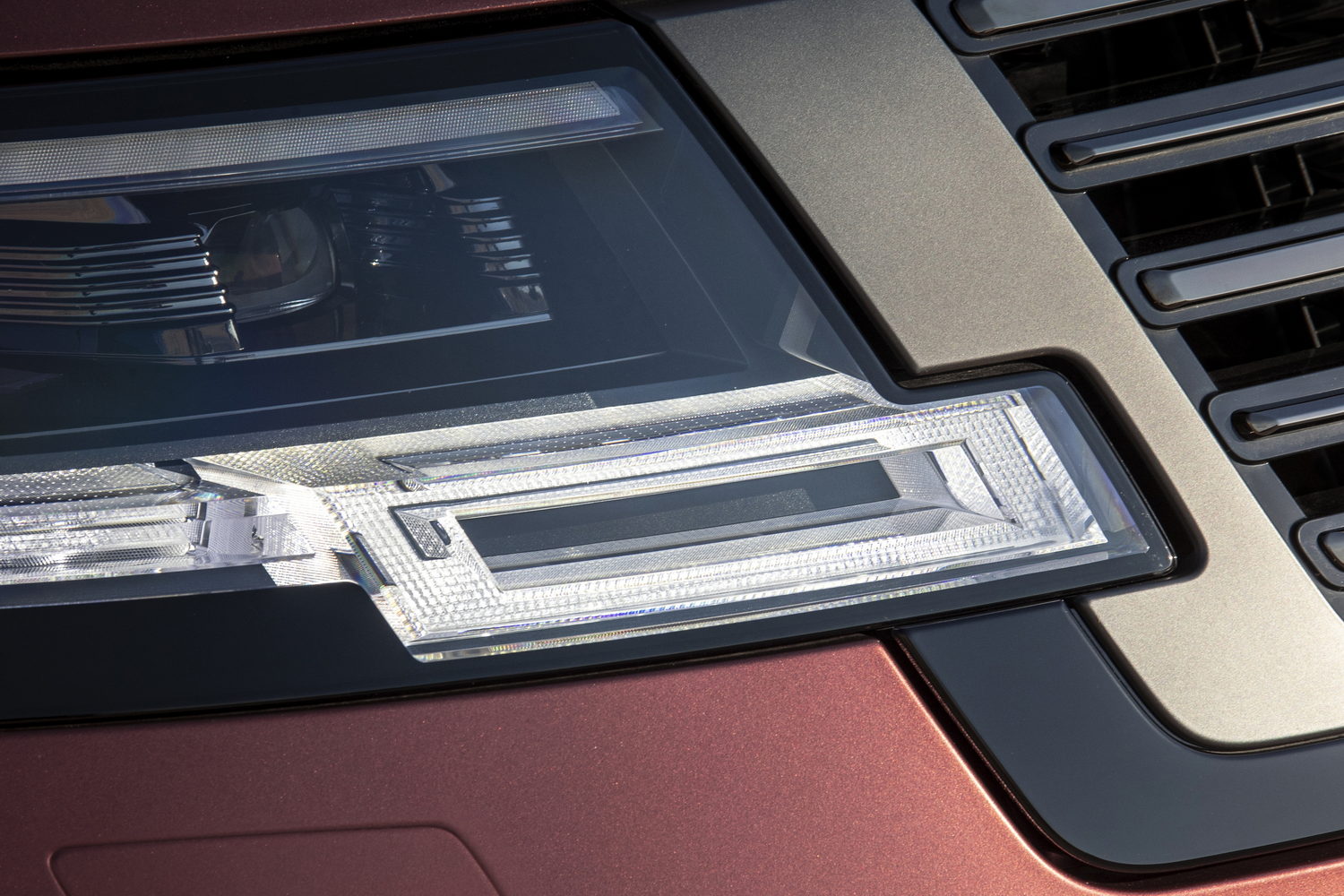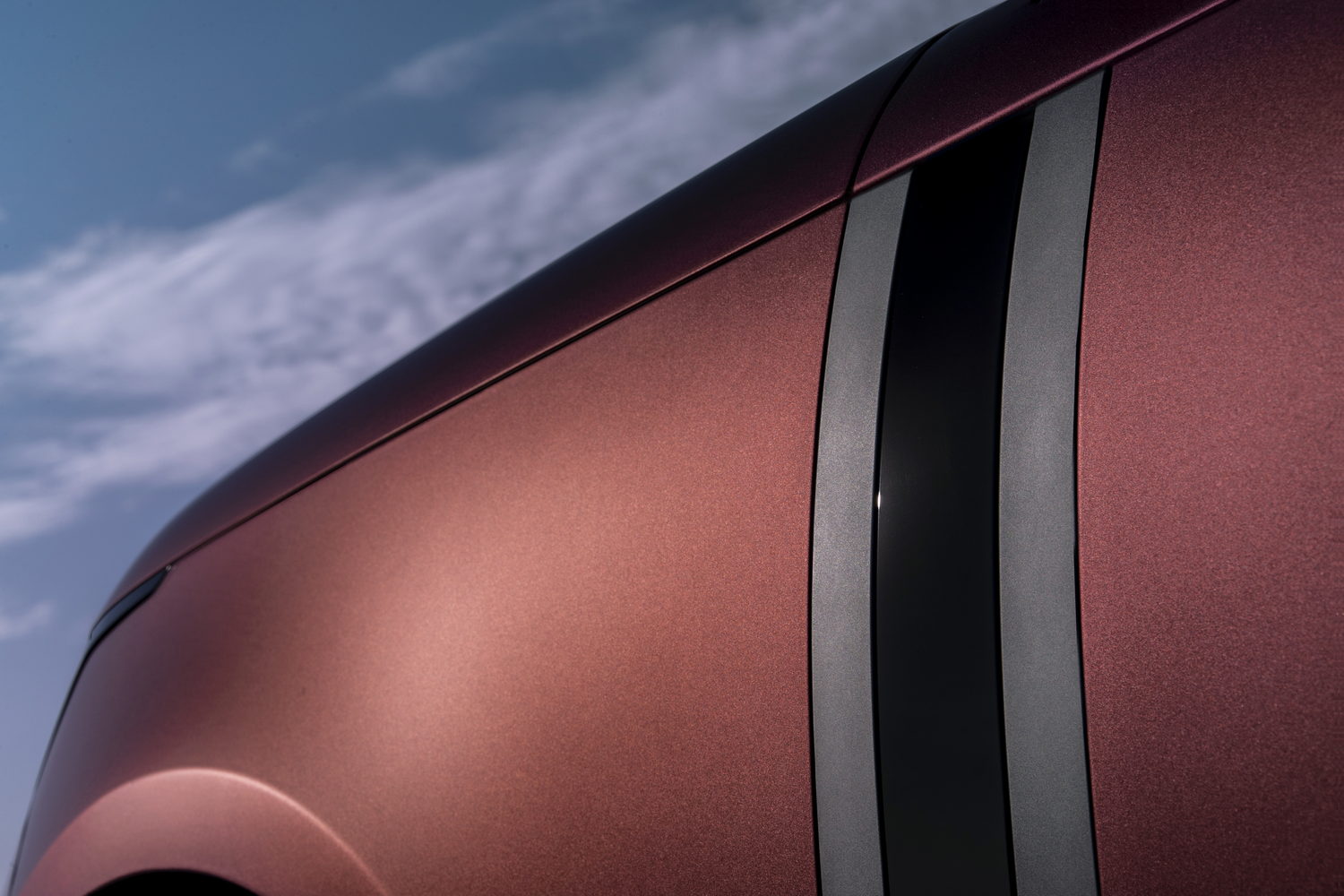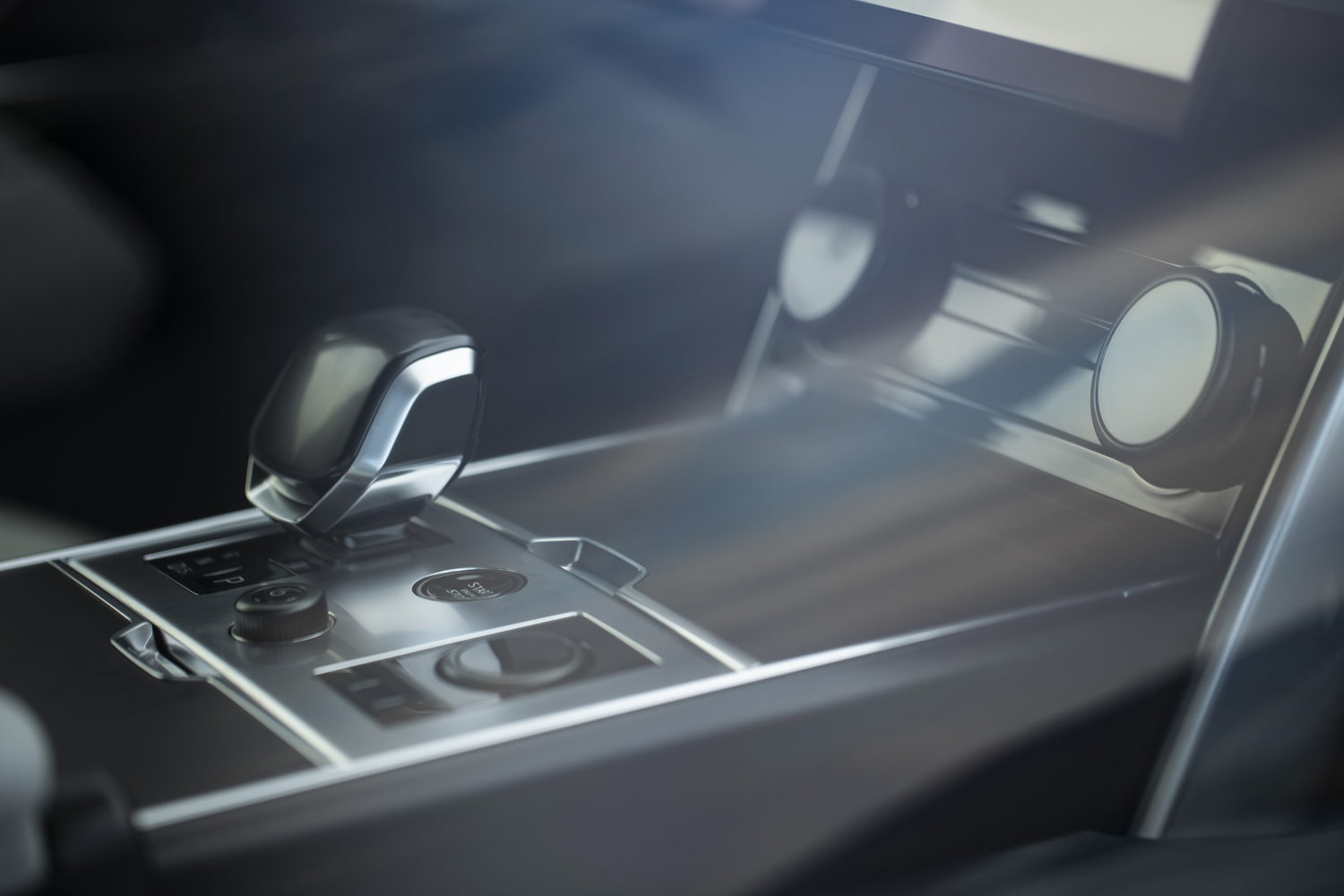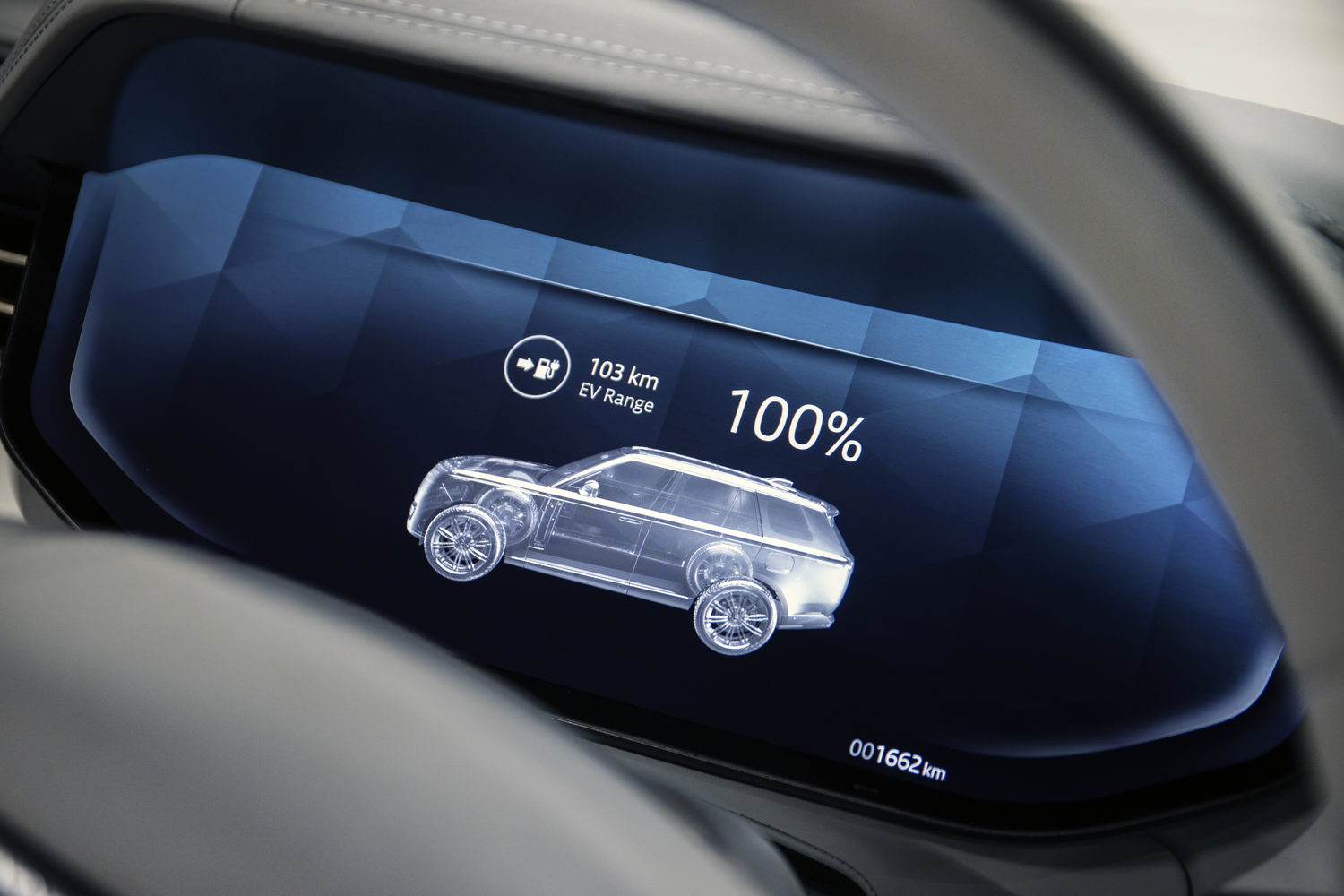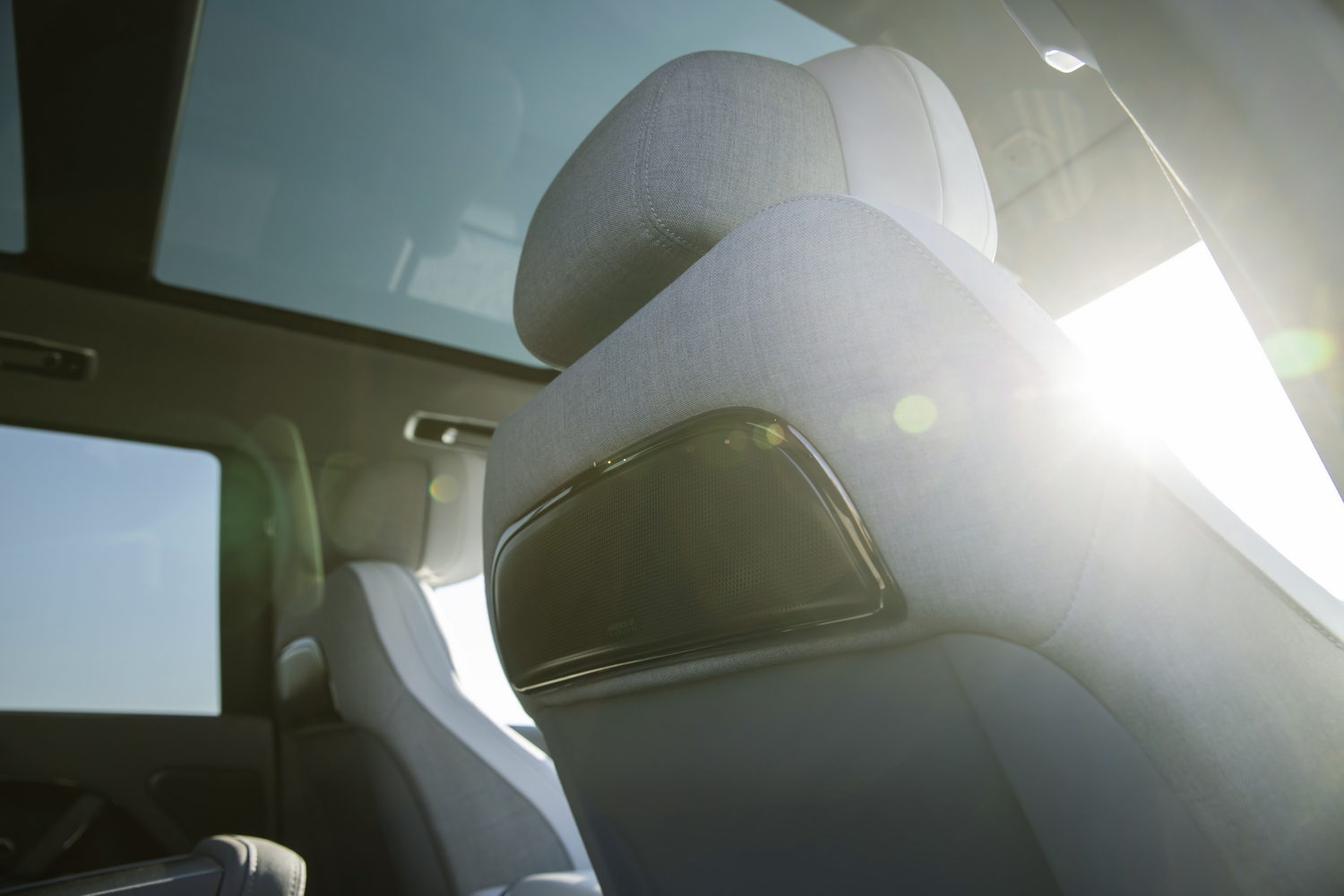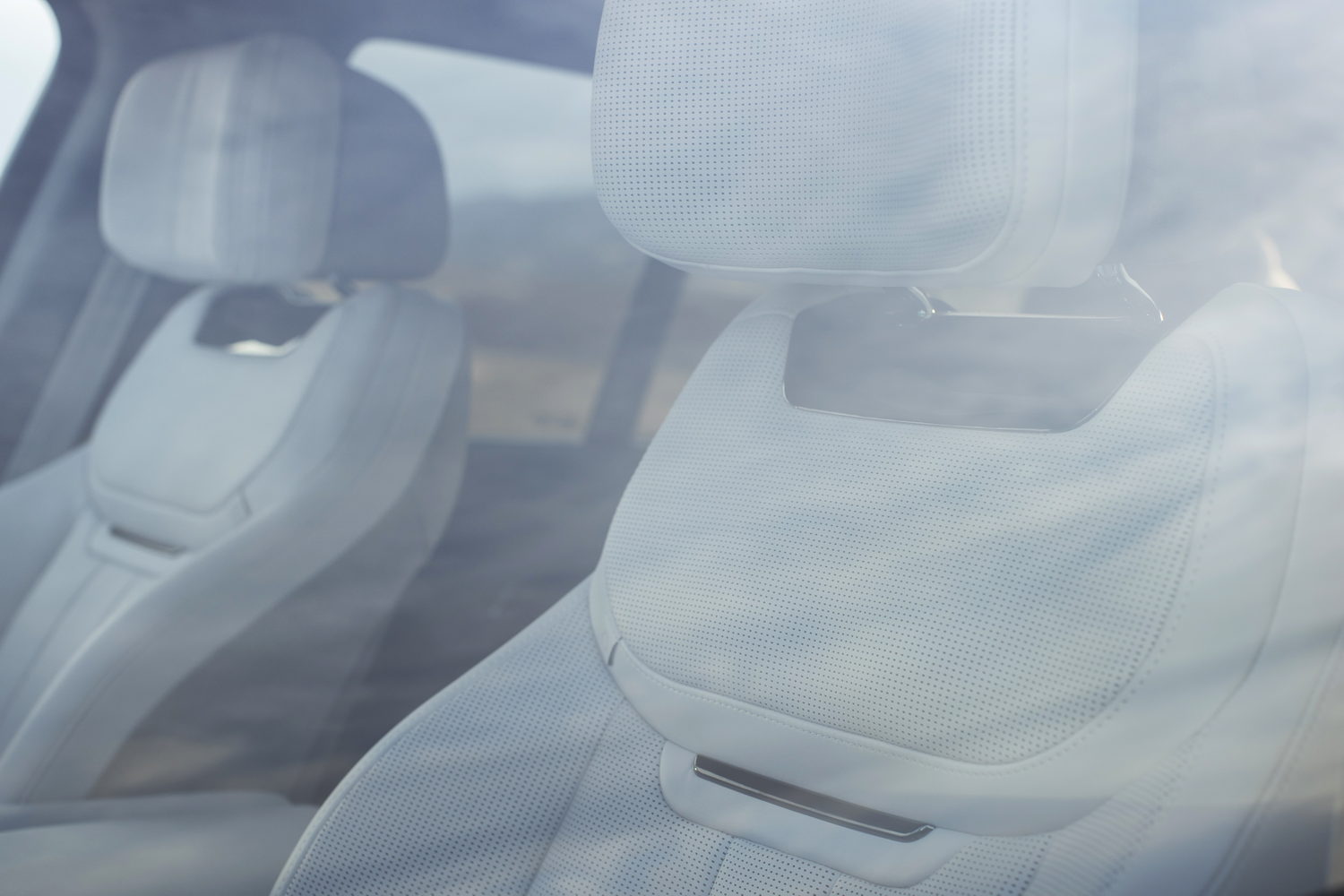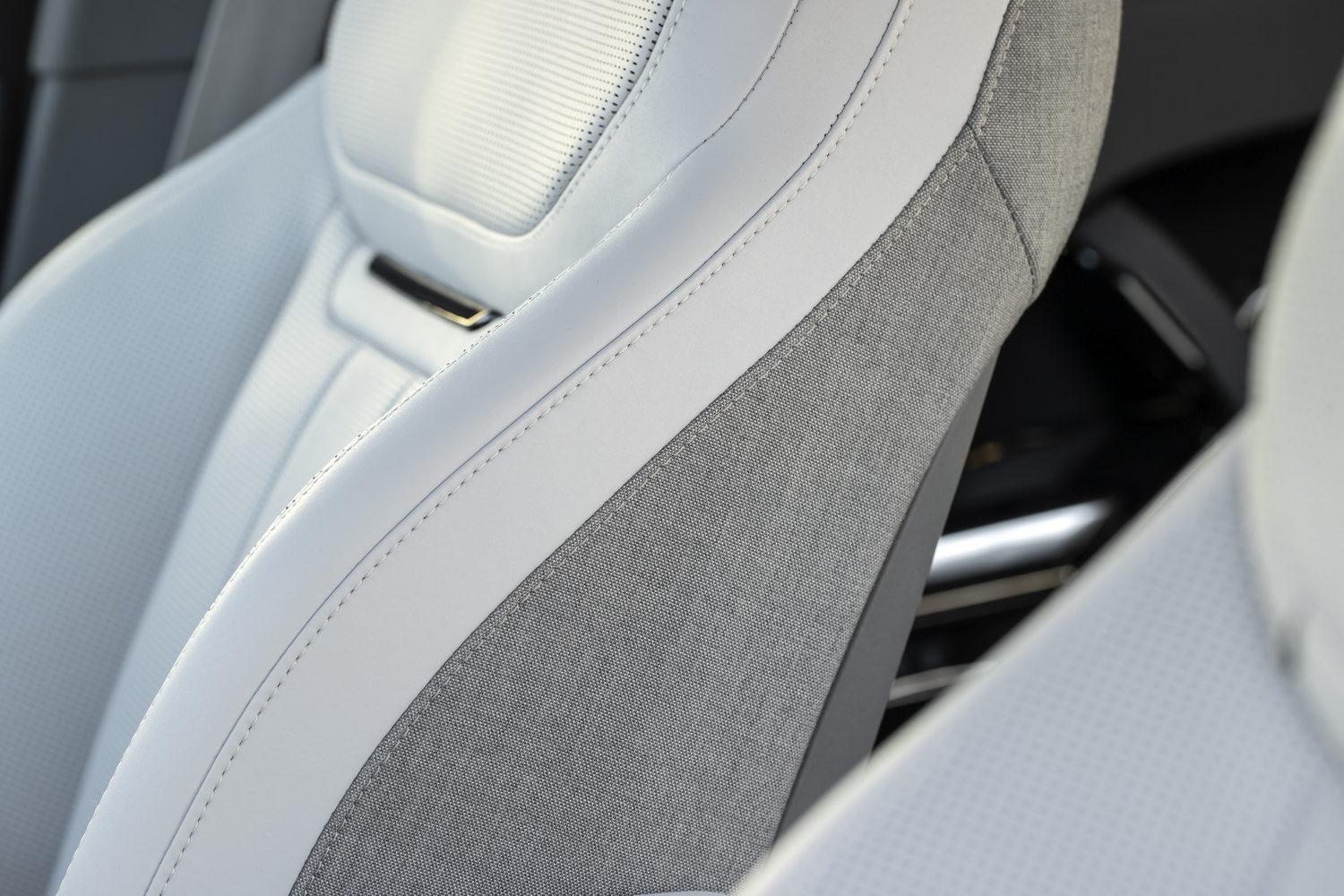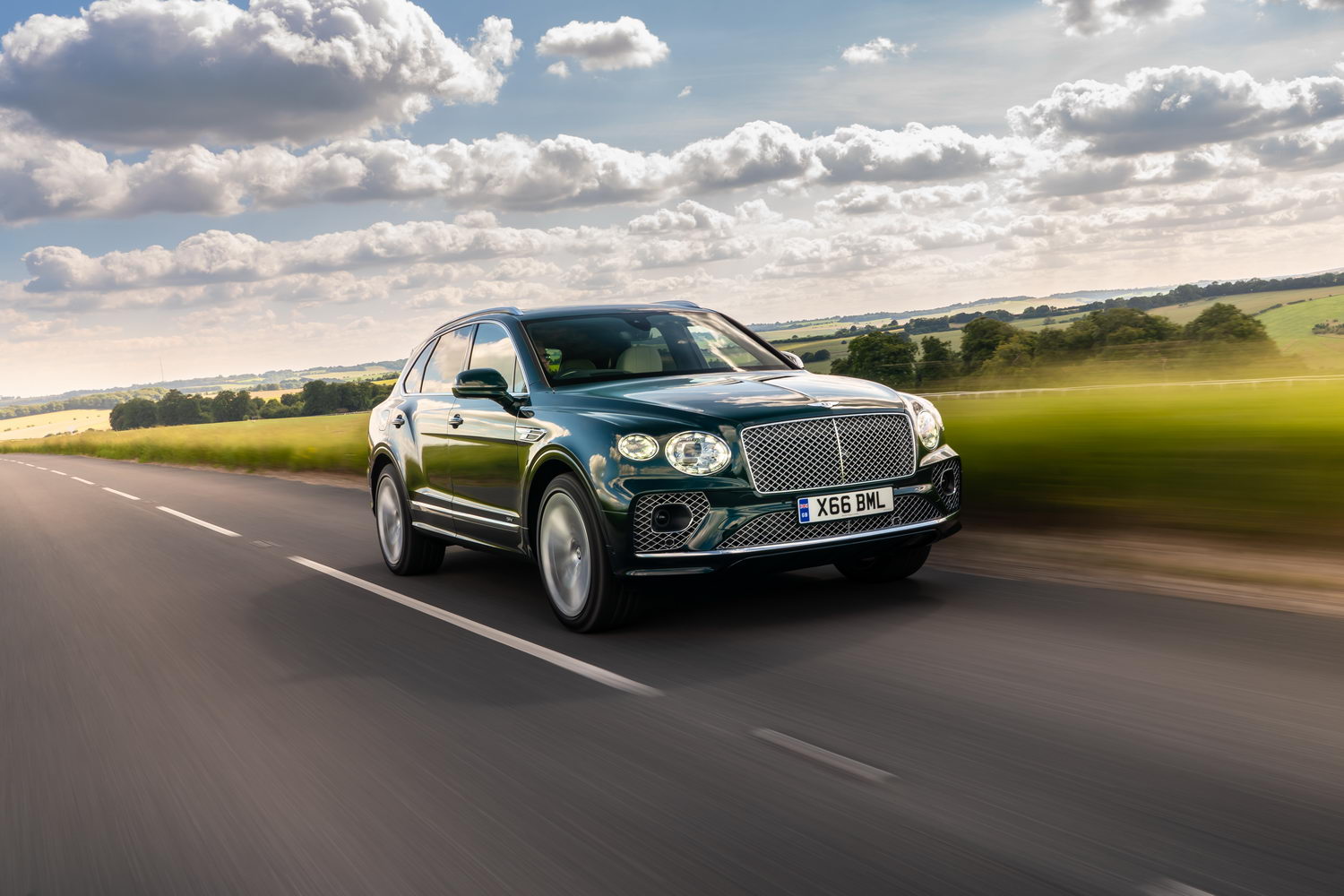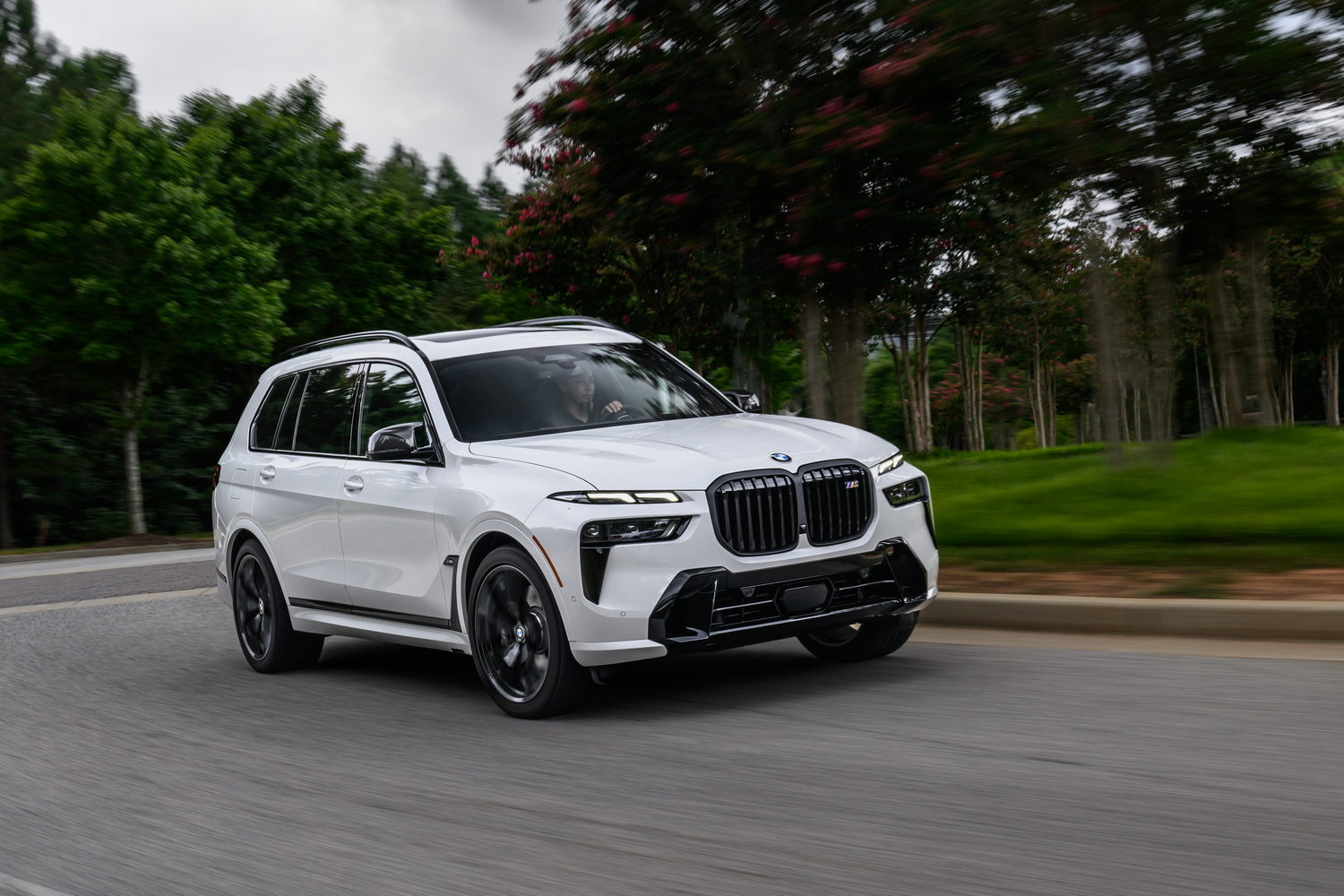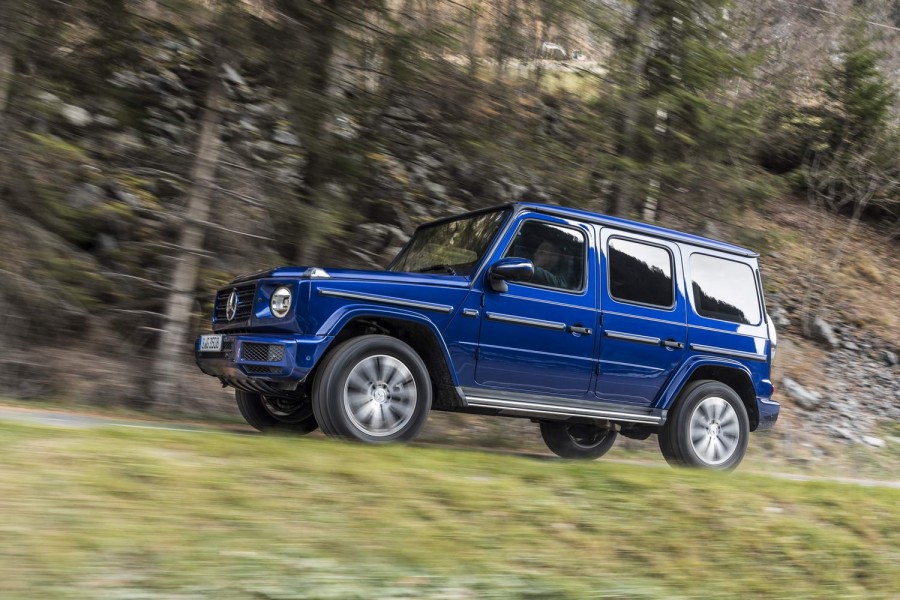Range Rovers have always had an imperious style about them, and this current model has that in spades. The addition of silent electric running seems to add to that, giving it a sense of grace and yes, if you must drive a Range Rover around town, this is the one to do it in.
In the metal
We're already pretty familiar with the new-shape Range Rover, as it has been on sale for a couple of months now and, indeed, we've already driven the V8 petrol and D350 mild-hybrid diesel models. However, this is the big one (in every sense...). Given that Land Rover Ireland's sales figures show that 92 per cent of all its Irish buyers are now picking plug-in hybrid models, this PHEV version of the Range Rover is going to be the crucial one for our market.
Well, almost. Realistically, it's the entry-level (a very, very relative term when you're discussing a Range Rover) P440e model that will be the critical one for Irish buyers. Here we are testing the more powerful P510e, which uses the same 3.0-litre straight-six petrol engine and the same 105kW electric motor, but which gets more performance - matching its badge with 510 metric horsepower and a massive 700Nm of torque. We're testing it here in top-spec SV form, complete with rather outré 'Sunrise Copper' matte paintwork, which looks more like pink than copper from most angles.
It's unquestionably a handsome thing, although its sheer bulk can be intimidating. In standard-wheelbase form, this Range Rover stretches just beyond the five-metre mark in length, and across the mirrors it's a whopping 2.2 metres wide. Just the 1.8 metres tall, though - about level with my hairline. Arguably, net of the pink paint, it's this full-size Range Rover that's better looking than the slightly smaller, sportier new Range Rover Sport. The rear end, with its upright, artfully hidden brake lights seems more elegant and more appropriate to a vehicle of this size than the Sport's wider, more horizontal stance. Other opinions are available.
Crucially, the Range Rover retains the model's classic split tailgate, which whirrs effortlessly apart on electric power, and which gives you a nice seat on which to sit and contemplate the world around you. Optionally, you can add rather lovely fold-out rear-facing seats built into the boot or, if you go for the more expensive long-wheelbase version, you can have seven proper forward-facing seats inside. Our test car was a plain-old five-seater, though. Land Rover quotes a seats-up boot volume of 1,050 litres, but that's loading to the roofline. If you're loading to the height of the luggage cover, it's more like 725 litres - still massively practical.
In the back, even in this standard wheelbase form, there's lounging space aplenty. There's just about enough room in the centre rear seat for an adult passenger, although the sculpting of the outer seats might make it less than entirely comfortable. If there is someone sat there, the helpful digital rear-view mirror, which takes the feed from a camera mounted in one of the twin rear roof aerials, means that the driver can effectively see through their head. Long wheelbase models get the option of a two-seat rear compartment with club-class style reclining, heated and massaging seats. We tried one of these out, briefly, and can confirm that the one per cent have it pretty good back there.
Just as importantly, up front the comfort levels are just as good. You sit high... because of course you do. Even by the general standards of large SUVs, the Range Rover feels (that word again) imperiously lofty. The view out, thanks to a relatively low-set dashboard, is generous even with the chunky windscreen pillars, and the flat windowsills along the side of the car means that you just have to lean your head slightly to get a clear view of where the edges of this massive car are. An all-round camera system, with a nifty 3D view of a digitised Range Rover, helps when manoeuvring in tight spots. Even more helpful is the rear-wheel steering, which twists the back axle by 7.3 degrees and gives this massive Range Rover the same turning circle as a MINI Cooper...
As with the exterior, the style of the cabin is quite pared-back, with an almost Scandi-minimalist look. You get two massive screens - a 13.7-inch digital driver's display and a 13.1-inch infotainment screen in the middle. That vast curved screen uses the impressive 'PiviPro' software that Land Rover debuted on the current Defender, and which, in spite of a general lack of physical buttons, is reasonably easy to find your way around. It's a shame that the graphics of the instrument panel don't look as slick as the graphics on the touchscreen, but then there's also a head-up display so you won't spend all that much time looking down at the instrument binnacle. Overall quality is excellent, aside from some rather cheap-looking black plastic housings for the speakers mounted atop the front doors.
The seats in our test car were not leather, but a silky-soft man-made fibre called 'UltraFabric', which is rather lovely to the touch. Other nice cabin bits include the anodised metal trim and sections of natural-finish wood. Basically, while this Range Rover SV costs as much as a nice house, once you sit inside it you realise that it feels way, way nicer than most houses. Hopefully Land Rover's recent promises to boost its quality levels means that it all looks as good and works as well in a few thousand kilometres' time.
Driving it
This Range Rover isn't simply big, it's heavy too. In fact, in this SV spec and with the big hybrid battery, it's tipping the scales at a whopping 2.8 tonnes.
For our test, we had a 140km route, starting with a full battery but driving in hybrid mode. Set up thusly, the car's computers know where it is and - with the navigation set for a destination in central Madrid - knew that it would have to save some electric charge for zero-emissions driving in the city centre. The route encompassed gravel track; tight, twisting and steep mountain roads; main roads; motorways; and the tight confines of downtown Madrid. Not a bad route, all-round.
In terms of fuel economy, the Range Rover PHEV aced it. OK, so we didn't get near the fanciful official figure of 0.8 litres per 100km, but we did get 5.5 litres per 100km, arriving at our destination with the fuel gauge not having left its top rest, and the battery still showing one third full. If you have a home charger and a driveway on which to charge regularly (and let's face it, if you're buying a €200,000 Range Rover, you do) then you could potentially achieve some spectacular fuel economy figures.
Land Rover's claim is that, on a full charge of the 31.8kWh (net) battery, which is mounted under the floor and so doesn't eat into boot space, you can go for 113 electric kilometres, or 111km for this specific SV model with its 22-inch wheels. That's probably an exaggerated figure, and Land Rover engineers say that a more realistic number is around 88km, which is still impressive.
We have to wait another two years, or thereabouts, before a fully-electric Range Rover is on sale, but this seems like a good stepping stone to that. Certainly, it means that the majority of buyers can cover most of their mileage on electric power and, no matter how large and profligate the car is in general, that must be a good thing. The battery takes around five hours to charge from a 7kW charging point, or you can rapid-charge it at up to 50kW from a public charger, although good luck dealing with the stares of hatred from EV users waiting for their turn if you try to do that.
Straight-line performance is excellent - the combined power of the big straight-six petrol engine and the electric motor, 510hp, is only just shy of that of the non-electric turbocharged V8 model. The torque output of 700Nm is also close to that of the V8. Little wonder then that in spite of a 300kg weight penalty, the PHEV takes only one second longer to sprint to 100km/h. From behind the wheel, that difference is largely academic.
Either way, you're dealing with something the size of a block of flats that can suddenly find itself moving at near-orbital velocity. The petrol engine is vocal when you rev hard, but it always manages to sound smooth. At a cruise, the only noise is the flutter of wind around the large door mirrors, but the double-glazed glass keeps that to a minimum. It helps that the stereo speakers built into the headrests work like noise-cancelling headphones, so aurally the Range Rover PHEV is astonishingly refined. And that's with the engine running - at low speeds, especially around town and under electric power, it's about as refined and quiet as modern motoring gets. Even a Rolls-Royce struggles to match it for refinement.
For comfort, though? That's a slightly mixed bag. The Range Rover gets standard air suspension across the line-up, and for the most part it works beautifully. Certainly, large surface changes such as speed bumps are dealt with insouciantly and the suspension's ability to keep the body sat dead level at a motorway cruise is just delightful.
The problem comes when dealing with short, sharp intrusions. Air suspension systems often have trouble dealing with these, and the 22-inch wheels amplify that issue, allowing distinct thumps up through the body when you hit a large expansion joint, or a sharp pothole. In the grand scheme of things, the Range Rover rides beautifully, but it's not as eerily, perfectly smooth at all times as you might like it to be.
In terms of handling, you also have to allow for some compromise. The steering, through a large four-spoke wheel, is light but very accurate and hugely confidence-inspiring. The days of twirly, over-light Range Rover steering are long in the past. On a twisty road, you can pick your way through a series of corners with surprising verve and precision, but eventually that weight does start to exact a toll.
Even with the Dynamic Response Pro system fitted - an electro-hydraulic anti-roll system, which can push down on the suspension with up to 1,400Nm of twist to keep the body level - the Range Rover PHEV can get to quite an interesting roll angle in a tight, quickly-taken corner. It never feels uncomfortable, and at no point did we feel that it was lacking for adjustability nor control, but it's certainly a car in which an old-school 'slow-in, fast-out' approach pays off.
Off-road, the Range Rover remains peerless within its class. Realistically, no-one who spends their hard-earned on this car is going to do anything too challenging with it, and risk damaging either body or alloys. If you want to go seriously off-road properly, buy a Defender. Or better yet, a Suzuki Jimny, a car so cheap by Range Rover standards that it's effectively disposable. The Range Rover will still plug mud with the best, not least because it remains in full-time four-wheel drive when driving in electric mode, and there is a plethora of driving aids and special camera views to help you, but who's actually going to use those in the real world?
What you get for your money
As the pinnacle of the current Range Rover line-up, the SV model gets some stunning extra accoutrements, including ceramic-coated interior controls, hand-finished marquetry wood veneer, actual metal plating for some of the exterior trim, rear-seat screens and the exclusive matte-finish paint jobs. The whole point of the SV model is that it can be customised to your taste so go nuts.
As to actual value for money? To be honest, in terms of raw equipment you're not getting much more than you would in a basic model, or a highly-specified Autobiography. You do get nicer seats, richer interior trims, some SV-exclusive fabrics and upholstery, plus 22-inch wheels, but given that you could basically double the price of the entry-level P440e, it's hard to see the point beyond boasting value.
Summary
If you're struggling with the idea of how a big, profligate SUV can still be a useful, useable thing in a world dealing with both energy and climate crises, then this plug-in Range Rover gives at least a glimmer of hope. It can be, if used correctly, genuinely economical, and for those who can charge at home and don't to hugely long journeys every day, it's effectively an electric model already. The Range Rover P510e arguably proves the whole point of a plug-in hybrid vehicle, and does so with style and class.

